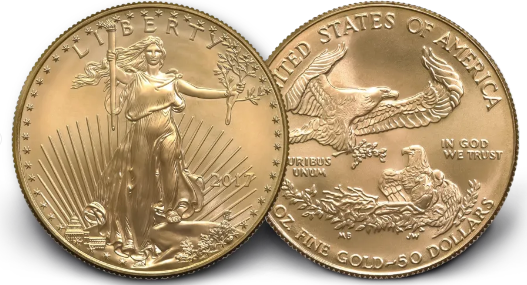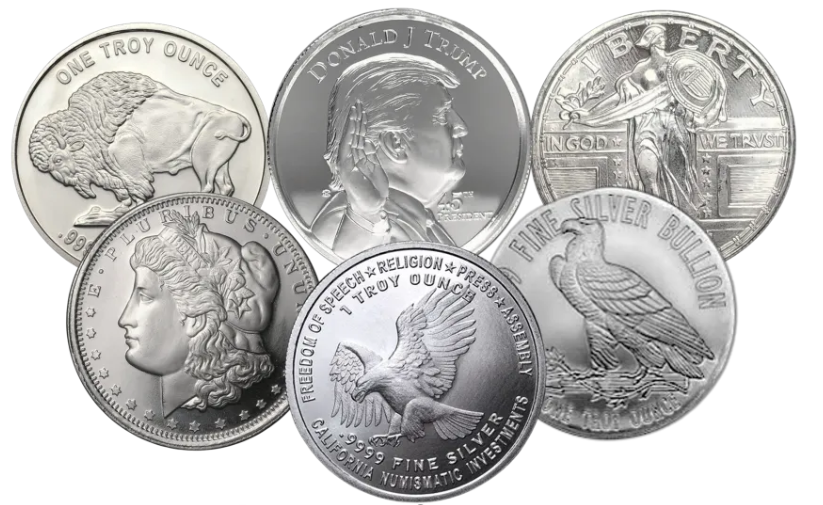Essential Gold and Silver Terms
My Metal Pro
Master the Language of Gold and Silver
My Metal Pro has seen firsthand how understanding the terminology used in the precious-metals world is key to making informed decisions. Whether you're new to investing in gold and silver or expanding your knowledge, it’s essential to grasp key terms like spot prices, premiums, and bullion. This guide covers important concepts and explains the factors that influence the value of precious metals. From stacking strategies to market forces, you’ll be equipped to navigate the gold and silver market with confidence. Explore these insights and contact My Metal Pro today to take the first step toward informed investing!
At the heart of buying gold and silver is the concept of the spot price. The spot
price represents the current market price at which a particular precious metal
can be purchased or sold for immediate delivery. It fluctuates continuously during
market hours, influenced by various factors, including supply and demand,
geopolitical events, and economic data.
Understanding spot prices is fundamental for any buyer because they are
the baseline for pricing physical bullion and coins. For example, if the spot price
of gold is $2,000 per ounce, a 1-oz gold coin would typically be priced around
this value, with additional costs accounted for by the spread and other factors. If
you were to purchase a 1-oz gold coin at a coin shop, expect to pay spot plus
an additional markup so the retailer can make some money. This additional markup is called a premium, which is the next term we’ll unpack.
When purchasing physical gold or silver, buyers often encounter premiums.
Premiums are additional costs over the spot price that account for various
factors such as manufacturing, distribution, and dealer markups. For example, a
gold coin might have a premium of $50 above the spot price, covering the cost
of minting and distribution.
Premiums can vary significantly based on the type and size of the product.
Bullion coins and bars typically have lower premiums compared to collectible
coins, which may carry higher premiums due to their rarity and historical
significance. Understanding premiums is crucial for assessing true cost and
making informed decisions.
Bullion refers to precious metals in their purest form, typically shaped into bars,
ingots, or coins. Unlike collectible or numismatic coins, bullion products are
valued primarily for their metal content rather than rarity or historical
significance.
Key characteristics of bullion include the following:
- Purity: Bullion products are usually made of highly pure precious metals. For instance, gold bullion is often 99.9 percent pure (24 karat), while silver bullion is typically 99.9 pure or even 99.99% pure!
- Weight standardization: Bullion comes in standardized weights, such as 1 oz, 10oz, or 1 kg, making it easy to trade and value.
- Lower premiums: Due to their simple production process and focus on metal content, bullion products generally carry lower premiums compared to collectible coins.
- Recognized brands: Many reputable mints and refiners produce bullion, including government mints like the U.S. Mint and Royal Canadian Mint.
Bullion is popular among buyers looking to own physical precious metals as a
hedge against inflation. Its value closely tracks the spot price of the underlying
metal, making it a relatively straightforward way to buy gold, silver, platinum, or
palladium. When purchasing bullion, always buy from reputable dealers and be aware of
the current spot price to ensure they're paying a fair premium for the product.
Stacking is a term commonly used in the precious metals community to
describe the practice of systematically accumulating physical gold, silver, or
other precious metals over time. This approach involves regularly purchasing
and storing bullion coins or bars, gradually building up a collection or "stack" of
precious metals.
Stacking typically involves consistency, with many buyers following a regular
buying schedule, such as purchasing a set amount of metal each month or
quarter. This approach can potentially benefit from dollar-cost averaging, which
may help mitigate the impact of price volatility.
Stackers often diversify their holdings across different types of metals (e.g., both
gold and silver) and various forms (e.g., coins and bars). This is generally viewed
as a long-term strategy with many stackers holding their metals for years or
even decades.
Stacking involves owning and often personally storing physical precious metals.
This aspect of physical possession is particularly appealing to many buyers who
prefer tangible assets.
There's also a community aspect to stacking, with many enthusiasts engaging in
online forums to share knowledge, compare strategies, and showcase their
collections.
Stacking can be an approachable way to enter the precious metals market as it
allows for gradual accumulation over time rather than a large upfront purchase.
However, it's important for stackers to consider factors such as safe storage,
insurance, and their overall financial goals when building their precious metals
stack.
The spread is the difference between the bid price (what buyers are willing to
pay) and the ask price (what sellers are asking for) of a precious metal. In
simpler terms, it's the gap between the buying and selling price. This difference
represents the transaction cost and can vary depending on the type of purchase
and market conditions.
Market forces are the forces that impact the prices of gold and silver, including
the following:
• Economic data: Indicators such as inflation, interest rates, and employment
figures can influence buyer sentiment and precious metal prices.
• Geopolitical events: Political instability, conflicts, and trade tensions can drive
buyers toward assets like gold and silver.
• Supply and demand: Mining production, industrial demand, and jewelry
consumption all play roles in determining the availability and desirability of these
metals.
The language of gold and silver is rich with terms that can initially seem
overwhelming. However, by familiarizing yourself with some of the key terms,
concepts, and lexicon, you can navigate the precious-metals market like a pro.
No matter what path you choose to take, understanding these terms is the first
step toward making informed and strategic gold- and silver-purchasing
decisions.
serviCe Area
Central, MO 63645
and surrounding areas



Share On: